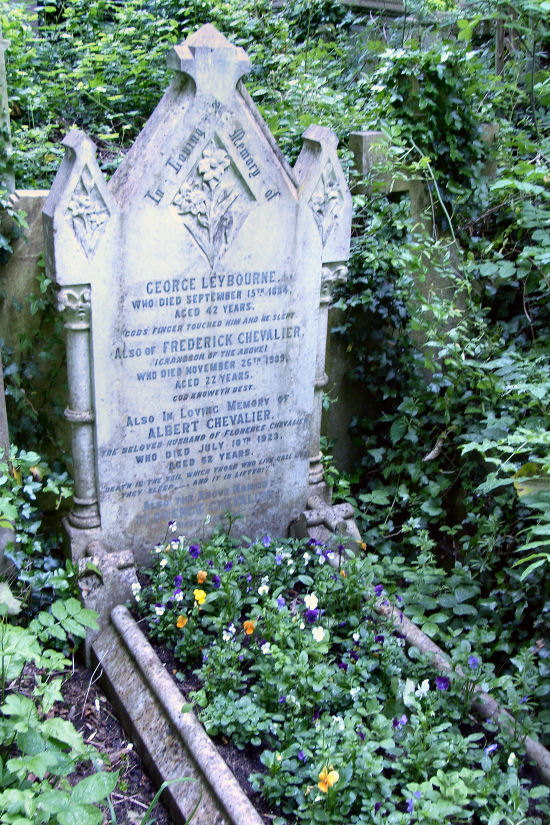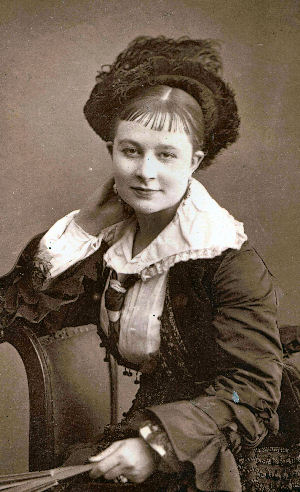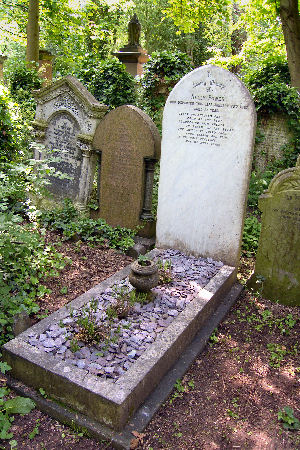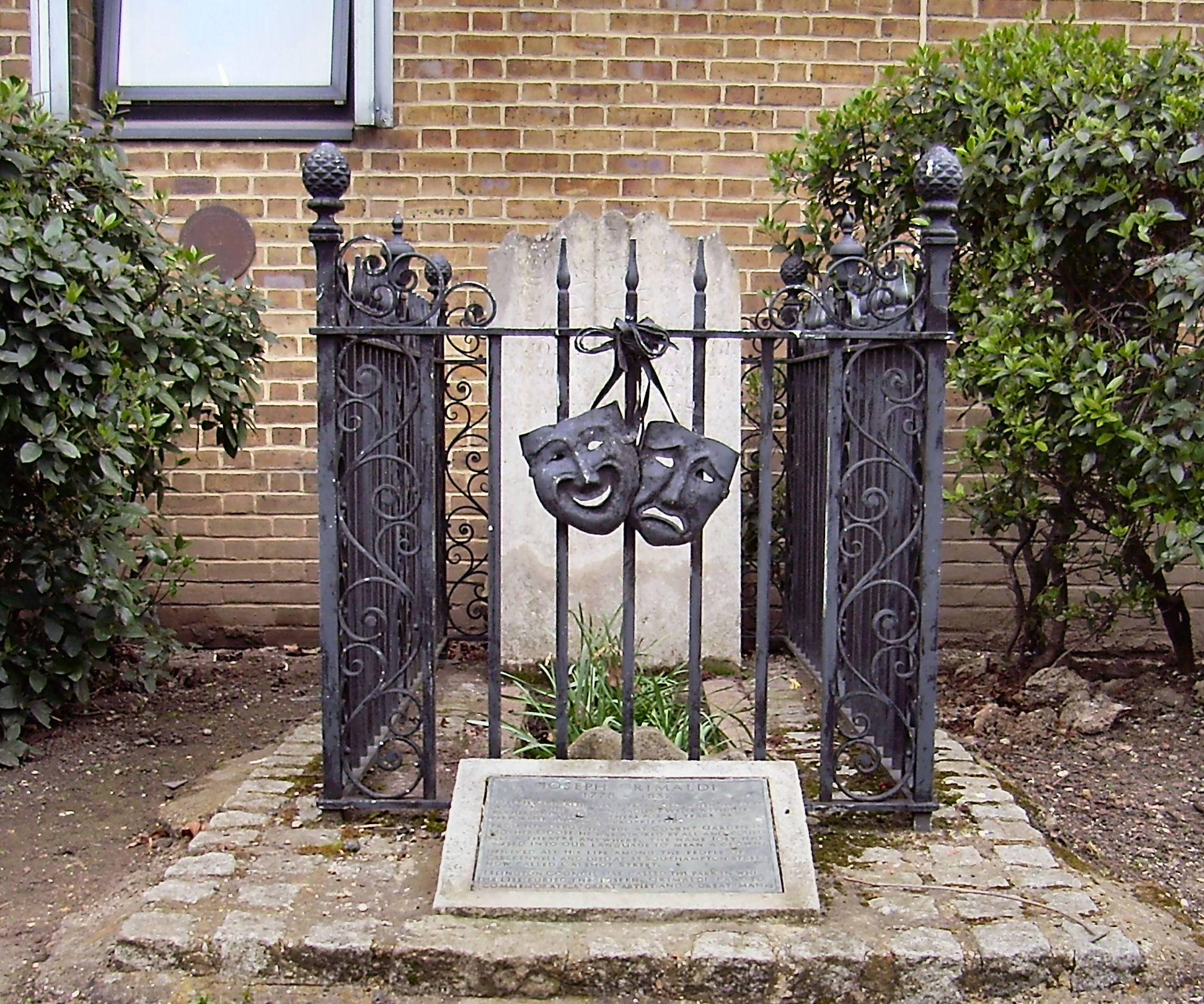Champagne Charlie
Born in 1842, the music hall artist George Leybourne, better known as Champagne Charlie, was one of the first "Lions Comiques". He had a magnificent voice and a manner of delivering his songs that caught the imagination of the music hall audience with his imitation of a West End swell. His success began when he met Alfred Lee, a composer. Without a penny between them, they trudged to the little office of a music publisher in Holborn. Lee sat at the piano with his new composition Champagne Charlie in front of him. Starting off in the music halls of the East End, he became so popular that he was soon engaged in the West End. Champagne Charlie was all the rage and George soon found himself the idol of the day, with his long Newmarket coat and his immaculate evening dress suit and white gloves. George Leybourne eclipsed every singer of his time, not with just the one song, but with many. From a few pounds a week George could command almost any sum he pleased, and in his heydey, he was earning one thousand pounds a week, a vast fortune in the 1860s. He was living at 136 Englefield Road, Islington when he died in 1884 aged just 42. He was buried in the Abney Park Cemetery, Stoke Newington, where he was later joined by his grandson Frederick, son-in-law comedian and singer Albert Chevalier, who wrote and recorded “The Future Mrs. 'Awkins", "Knocked 'Em in the Old Kent Road", "Coster's Serenade", "Funny Without Being Vulgar", and "The Nasty Way 'E Sez It”, and daughter Florence. They are resting in a grave cared for by The Music Hall Guild of Great Britain and America.

The Abney Park grave of Champagne Charlie.
Nelly Power

On the morning of Thursday 20 January 1887 Miss Nelly Power, the delight of the music hall, died at the age of thirty-two. She was once one of the attractions at the Vaudeville theatre in The Strand, with a voice and style of singing that was far above the burlesque acts. She became a favourite of music halls like the Canterbury and was engaged at the time of her death at the Trocadero. Although she has long since been forgotten, she was a top-class star of the Victorian music hall and lies in a well-hidden grave alongside Champagne Charlie at Abney Park.
Her grave at Abney Park Cemetery was restored in 2012 by the theatre charity The Music Hall Guild of Great Britain and America
 Joseph Grimaldi
Joseph Grimaldi
Although not a music hall star in the true sense of the word, the King of Clowns, Joseph Grimaldi was born in Clerkenwell in 1778, the son of the Italian dance master Giuseppe Grimaldi. Joey, the name which is still used for a clown today, made his stage debut at Sadler’s Wells at the age of three. It was here that he spent the next 45 years as both performer and part owner. He became part-owner through marrying Maria Hughes, the owner’s daughter, who died just 18 months later during childbirth. Just over a year later he married Mary Bristow. They had a son named Joseph who followed in his dad's footsteps as a clown, only to die aged thirty an alcoholic.
As the now famous 'Joey', suffering from depression after the death of his first wife and their child, the story was circulated where Grimaldi went to see a doctor anonymously for some help with his unhappiness. The doctor told him to do try some diversion like seeing Grimaldi. The patient said, “Ah, but Doctor, I am Grimaldi.” He invented the clown's make-up of a white face with lots of bright colours around the eyes, lips and cheeks, wearing bright baggy clothes and long pointed hats. He suffered ill-health in middle age through his jumping and falling about when young, and as he grew older could barely walk. It is said he was a physical wreck through years of extreme physical exertion. The landlord of his local pub the Cornwallis Tavern in Pentonville would carry Joey home. Being unable to work, Joey became broke and the Drury Lane Theatre helped him with a £100 per annum pension. He died on May 31, 1837, at 33 Southampton Street, present-day Calshot Street, Clerkenwell, and is buried in what was St. James's Chapel, Pentonville Road. The church suffered bomb damage in World War II and was decommissioned in 1959, and demolished in 1985. The area was turned into a park named Joseph Grimaldi Park after this king of clowns. There is an annual church service on the first Sunday in February, when clowns from across the UK gather in Dalston’s Holy Trinity Church. The congregation of clowns can dress up in their costumes complete with face paint in remembrance of ‘Joey’ Grimaldi.

King of Clowns, Joseph Grimaldi's grave in Grimaldi Park Pentonville Road.
London Time

Follow Us
The contents of this website are the property of knowledgeoflondon.com and therefore must not be reproduced without permission. Every effort is made to ensure the details contained on this website are correct, however, we cannot accept responsibility for errors and omissions.
© Copyright 2004 -
Contact Us | Advertise